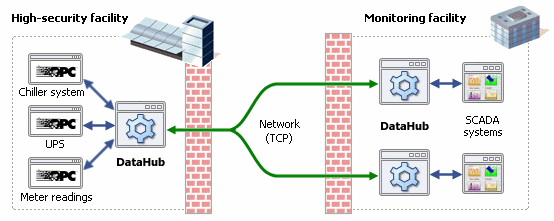Cogent Introduces OPC UA-Enabled DataHub at SPS IPC Drives
At SPS IPC Drives 2016 Skkynet subsidiary Cogent Real-Time Systems will demo a release candidate of Cogent DataHub with OPC UA support.
Mississauga, Ontario, November 15, 2016 – Skkynet Cloud Systems, Inc. (“Skkynet”) (OTCQB: SKKY), a global leader in real-time cloud information systems, announces that Cogent Real-Time Systems, a Skkynet subsidiary, will demonstrate the latest release candidate of the Cogent DataHub® with OPC UA support at the OPC Foundation booth at SPS IPC Drives 2016 in Nuremburg, Germany, November 22-24. With OPC UA support, this version of the Cogent DataHub will be able to connect to virtually any industrial system, ranging from legacy equipment to state-of-the-art Industry 4.0 and Industrial IoT projects.
“OPC UA is where the world is headed,” said Andrew Thomas, Cogent CEO, “and we help our clients get there. The DataHub is uniquely positioned to extend OPC UA by seamlessly connecting it to the previous generation of OPC (OPC Classic), while providing full integration with SQL databases, Excel spreadsheets, a web-based HMI, and the SkkyHub service.”
OPC is a series of standards for connecting industrial hardware and devices with HMIs and other software. OPC Classic has a twenty-year established user base of millions of installations. OPC UA (Unified Architecture) was introduced to expand the domain of OPC beyond traditional industrial applications, and to provide improved networking and security.
The latest version of the Cogent DataHub being demonstrated at SPS IPC Drives fully integrates OPC UA as one of its standard protocols, along with OPC DA and other industrial protocols to support OPC networking, OPC server-server bridging, aggregation, data logging, redundancy, and web-based HMI. Capable of handling over 50,000 data changes per second, the DataHub is also seamlessly integrated with Skkynet’s SkkyHub and ETK for secure, end-to-end Industrial IoT and Industry 4.0 connectivity.
Skkynet’s SkkyHub service connects to the Cogent DataHub to securely network live data in real time from any location. It enables bidirectional IoT-based supervisory control, integration and sharing of data with multiple users. Secure by design, the service requires no VPN, no open firewall ports, no special programming, and no additional hardware. The Skkynet Embedded Toolkit (ETK) allows embedded devices to make a secure connection to the Cogent DataHub or SkkyHub, enabling real-time, bidirectional IoT data flow.
About Skkynet
Skkynet Cloud Systems, Inc. (OTCQB: SKKY) is a global leader in real-time cloud information systems. The Skkynet Connected Systems platform includes the award-winning SkkyHub™ service, DataHub®, WebView™, and Embedded Toolkit (ETK) software. The platform enables real-time data connectivity for industrial, embedded, and financial systems, with no programming required. Skkynet’s platform is uniquely positioned for the “Internet of Things” and “Industry 4.0” because unlike the traditional approach for networked systems, SkkyHub is secure-by-design. For more information, see http://skkynet.com.
Safe Harbor
This news release contains “forward-looking statements” as that term is defined in the United States Securities Act of 1933, as amended and the Securities Exchange Act of 1934, as amended. Statements in this press release that are not purely historical are forward-looking statements, including beliefs, plans, expectations or intentions regarding the future, and results of new business opportunities. Actual results could differ from those projected in any forward-looking statements due to numerous factors, such as the inherent uncertainties associated with new business opportunities and development stage companies. Skkynet assumes no obligation to update the forward-looking statements. Although Skkynet believes that any beliefs, plans, expectations and intentions contained in this press release are reasonable, there can be no assurance that they will prove to be accurate. Investors should refer to the risk factors disclosure outlined in Skkynet’s annual report on Form 10-K for the most recent fiscal year, quarterly reports on Form 10-Q and other periodic reports filed from time-to-time with the U.S. Securities and Exchange Commission.






